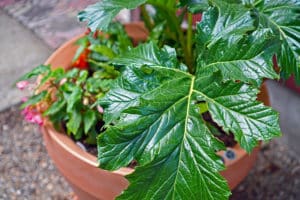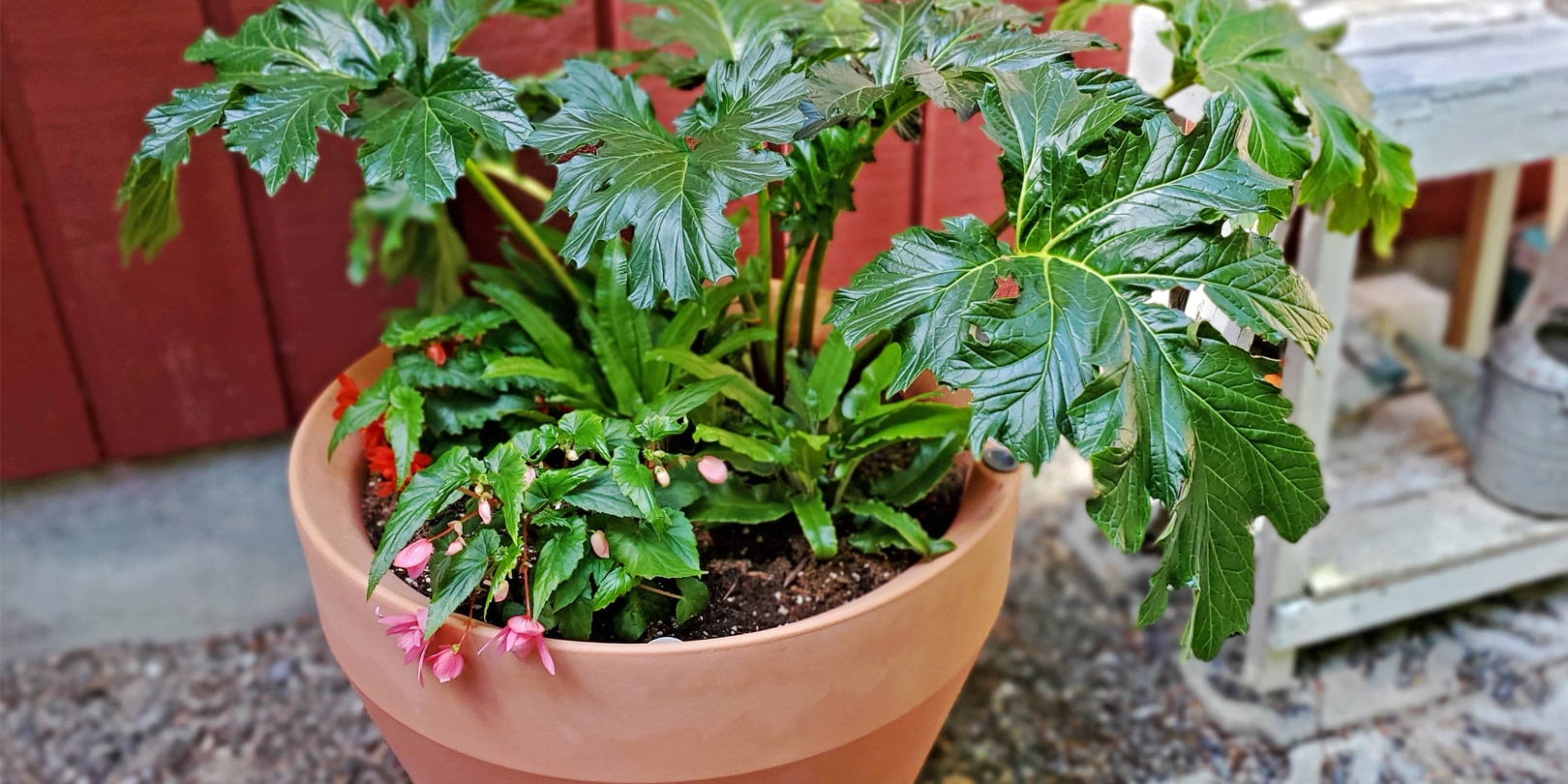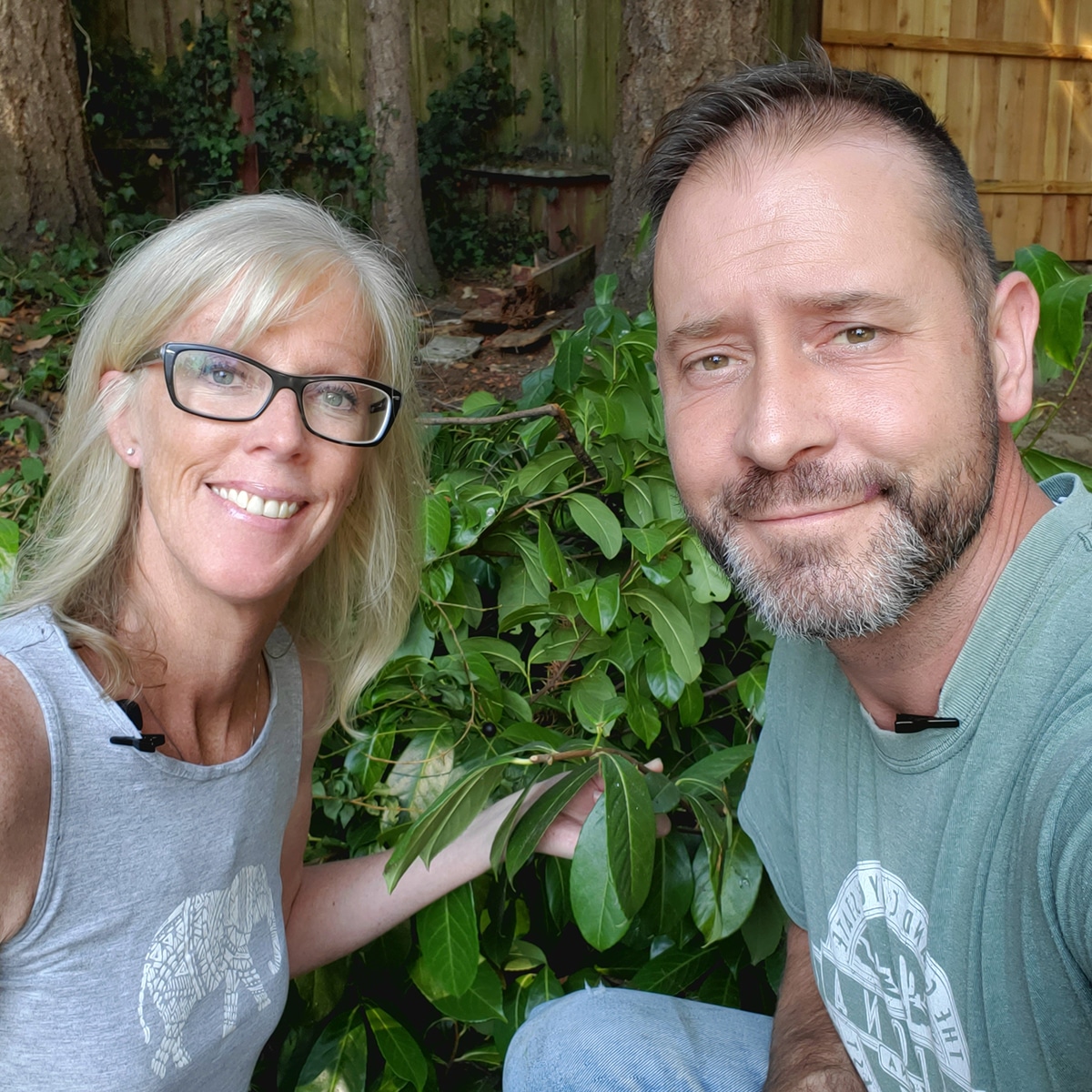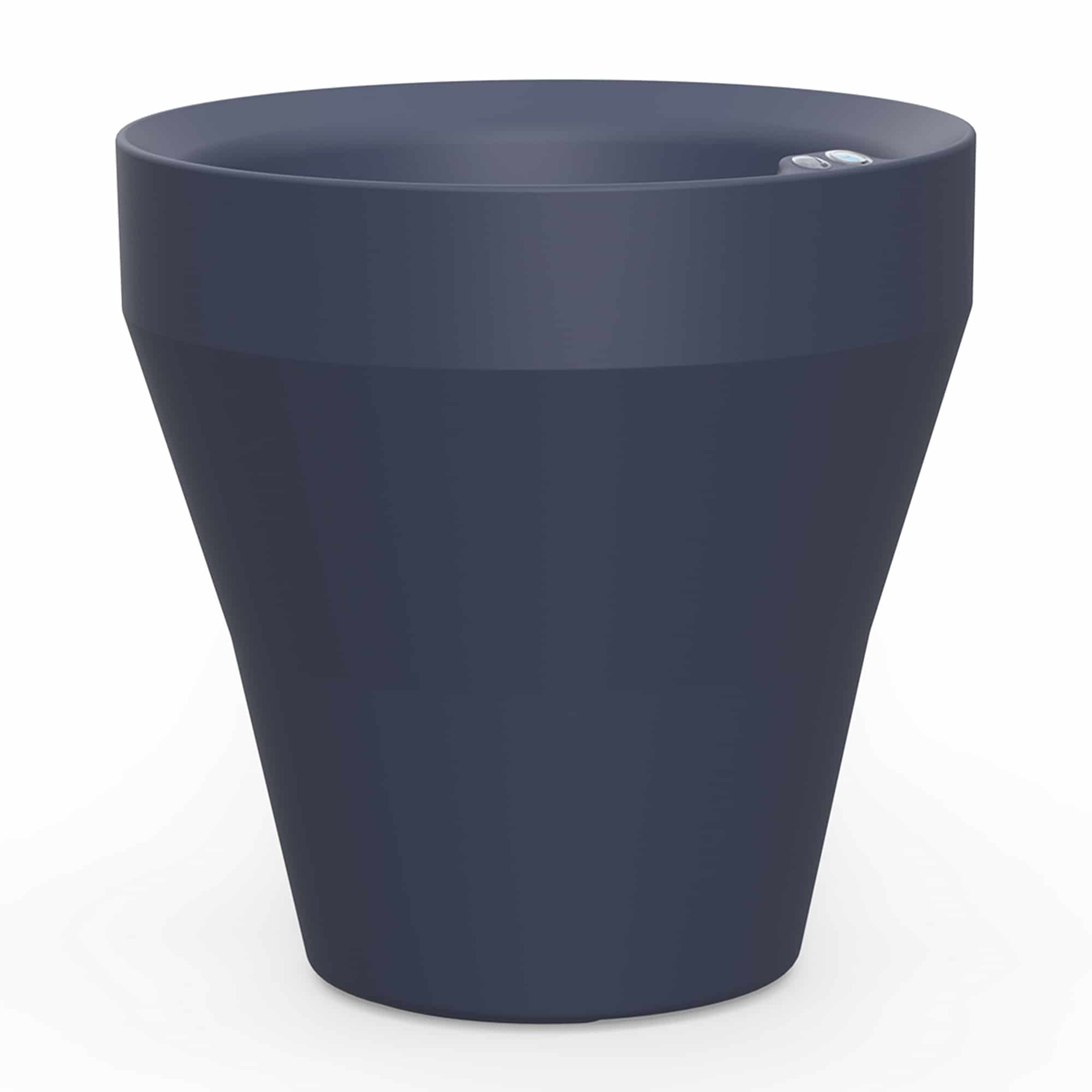Our gardens can have many different looks, themes, and characteristics to give us that unique feel we all crave as gardeners, and one look many of us seek year after year is a bold, tropical look. The ability to create an outdoor oasis that feels like an instant vacation every time you walk outside is a garden goal for many. In addition, by creating this look in a container that can fit anywhere, depending on the space you have available, is even better.
However, if you do not live in the tropics, a tropical theme can seem daunting to achieve. What plants can be added to this tropical garden? How big will these plants get and how large of a growing space do they need? Not to mention, what level of plant care is involved in maintaining a tropical theme?
Container gardening presents its own gardening challenges as well. With limited space available for growing and the microenvironments they create, plants need to be paired strategically so that they will grow under the same conditions, complement each other and have enough space to grow and thrive.
Ideally, low maintenance, easy-to-care-for plants would be the perfect combination for any container garden, especially planted in a Rim TruDrop self-watering container, because it means less time attending to the needs of just a few plants and more time spent on other gardening tasks (or relaxing).
And just because you might not live in a tropical climate does not mean you cannot achieve a tropical-looking container full of beautiful plants that will grow and thrive together in harmony.
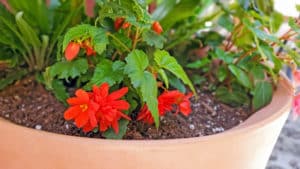
Achieving a “Tropical” Look in Your Garden
When you picture a tropical garden, you might think of palm trees with their large, fan-shaped fronds or banana plants with their huge, large, lush foliage. Tropical gardens create a sense of lushness with their dense plantings with lots of bold layers of foliage and bright flower colors. The main element in tropical container gardening design is foliage. And, usually, the bigger and bolder the foliage, the better.
Other characteristics that make a garden “tropical” include:
- Lush, green foliage in various shapes and sizes
- Glossy or soft foliage
- Fern-shaped foliage
- Foliage shapes that are long or wide (or both) with unique serrated edges or margins
- Bold, rich flower colors in various shades of pink, yellow, orange, etc.
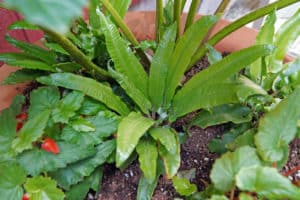
Plants That Can Look Tropical in a Non-Tropical Environment
Now that you have a sense of what is needed to achieve a tropical-looking container, time to fill it with plants and choose the appropriately sized container. Each plant’s mature size in relation to each other should factor into whatever size container you pick, like the 26” Rim TruDrop self-watering container (in weathered terracotta) we used. We knew we would be adding a lot of plants, including one large one, therefore we needed a large container size.
Next, think of your tropical planter as a mini tropical forest with different sunlight levels and sizes, and dense, layered plantings. Look for plants that are lush and green with large, glossy leaves that remind you of a jungle environment. The key is to match plants that have similar sun, water, and soil needs with each other in the same container. And make sure they are hardy to your USDA hardiness zone. It might surprise you how many “tropical” plants can grow in cooler and colder climates.
Examples of tropical plants include:
- Acanthus
- Palms
- Dracaena
- Windmill Palm
- Elephant Ears
- Caladiums
- Avocado (cold, hardy types)
- Yucca
- Hardy Sugar Cane
- Hibiscus
- Soft Shield Fern
- Hart’s Tongue Fern
- Angel’s Trumpet
- Canna Lily
- Mexican Blue Palm
- Calla Lily
- Impatiens and New Guinea Impatiens
- Begonias
- Coleus
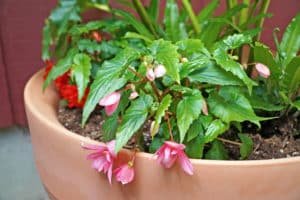
Designing Your Tropical Container
Container gardening design is such a creative, fun process because as long as you match plants based on their growing needs, the sky is the limit as far as design is concerned.
First, choose at least one large plant that can serve as the focal point. Often, the tallest plant in your container, for example an acanthus, mini palm, or elephant ear, can take either full sun or part shade but then provides varying light levels to the plants growing beneath it. Thes undergrowth can then consist of medium-sized plants with varying foliage sizes that fountain out, like a fern or lily. These plants usually thrive in full to part shade or very speckled sunlight. Finally, add smaller flowering plants to brighten up your container with bold colors reminiscent of a tropical environment, like begonias or impatiens. Often, many of these plants will trail over the edges of your container for an even bolder look.
Next, think of plant placement and spacing. Do you want to plant your largest plant in the center of the container then space all the other plants around the base of that plant in a circle? Or, do you want to plant your largest, tallest plant in the back of the container as it relates to your view and then add the rest of your plants back to front? We designed our container with this second design idea in mind. Our largest plant, an Oak Leaf Acanthus (Acanthus mollis), was planted in the back, then three medium height plants, Hart’s Tongue Fern (Asplenium scolopendrium), in front of the acanthus, and finally two begonia hybrids (Begonia hybrida) in front of the ferns.
As you read earlier, we chose a large 26” Rim TruDrop self-watering container (in weathered terracotta) because we knew we needed a lot of growing space. Plus, since this is a self-watering container, that means a lot less maintenance overall. You might think tropical-looking plants need more water than other plants in your garden, but that is not exactly true. Most need to be on a regular watering schedule and you can take the guessing work out of when to water by using a self-watering container. This can even take the place of setting up a water system with timers because self-watering containers are a “set-it and forget-it” product for watering. This is because they are used as any other container in your garden, but they have the added feature of a water reservoir built into the base of it where the plants can draw off that water supply for weeks until it needs to be refilled. This means the container needs little input or care throughout the growing season to thrive. Our Rim TruDrop self-watering container lasts for almost four weeks before we need to fill up the reservoir. Talk about low maintenance!
Ready for your Piña Colada?
Now that you know creating and adding a tropical container to your garden is not too big of a deal, you can certainly add one (or twenty) to your garden. And not only is creating a tropical-looking container easy and fun, but you also have a huge plant list to weigh your tropical look options. Luckily, as you read above, there are several tropical-looking plants that you can pair in any container, have similar growing conditions, and will thrive in cooler climates. By also making it low maintenance by pairing plants with similar growing needs and using a self-watering container, the container can practically care for itself. There isn’t anything else to do except kick up your feet and enjoy the show.
